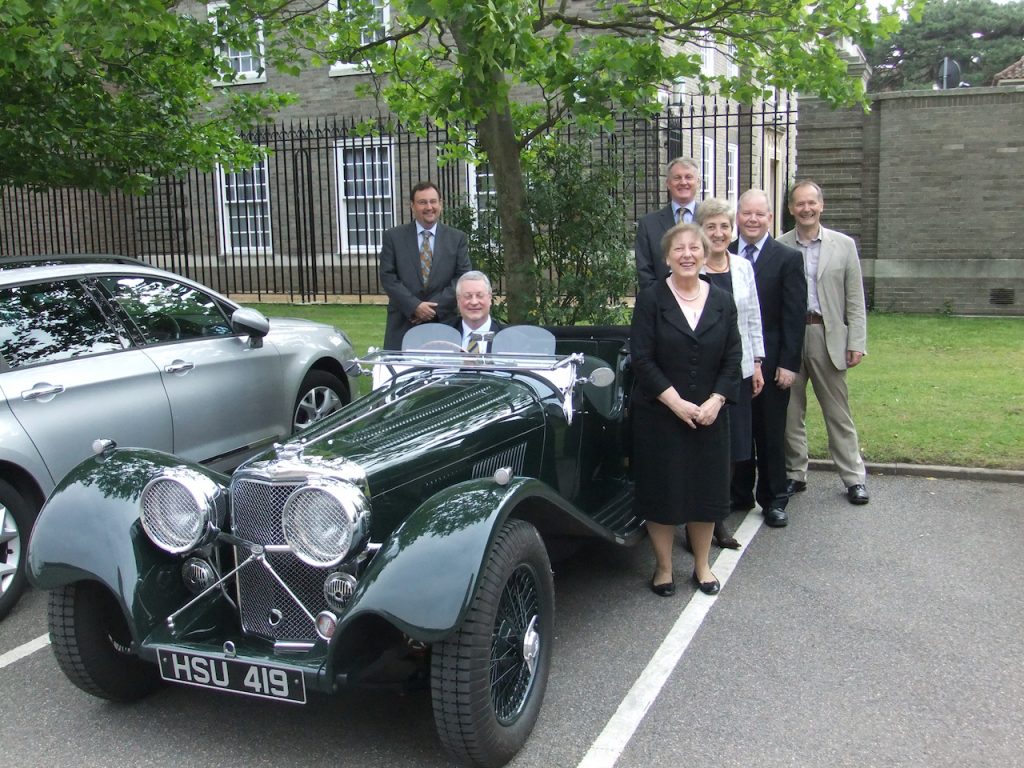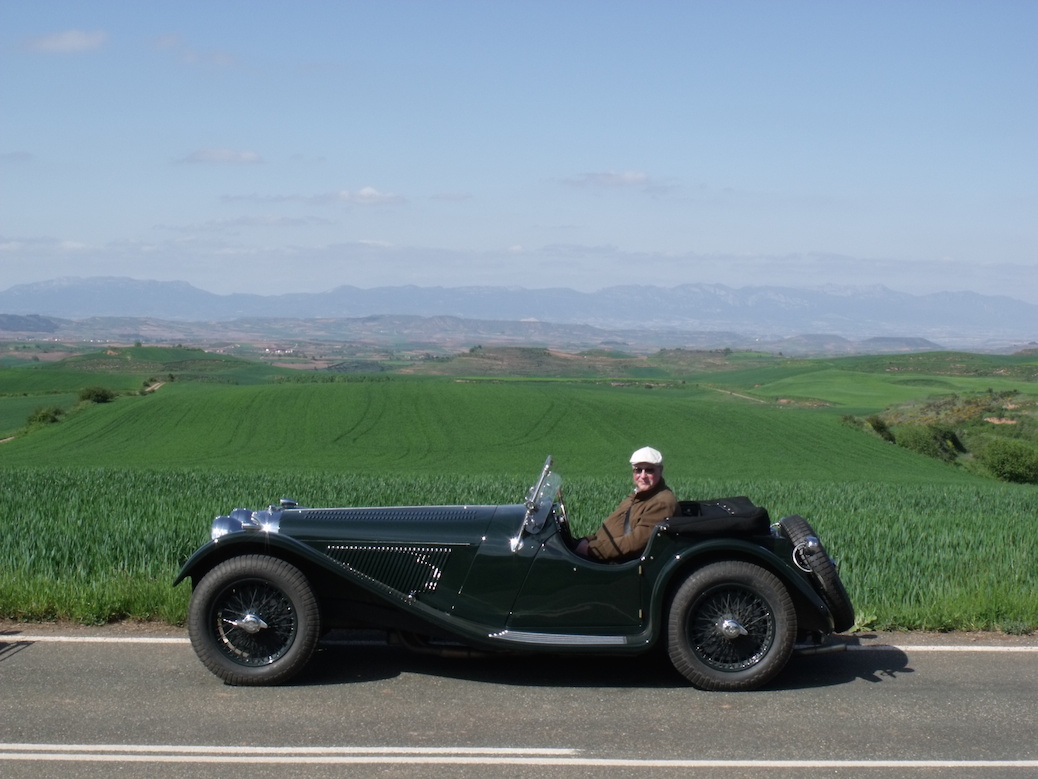You may have read an article (“When is a Jaguar not a Jaguar?”) in October’s edition of the national Jaguar Enthusiast magazine about the demise of Suffolk Sportscars after twenty-five years.
The Suffolk SS100 is a visually and dimensionally accurate replica of the original SS100 Jaguar sports car that William Lyons launched in 1936. The SS100 was, and still is, reckoned one of the most graceful designs of the pre-war period. All told, SS Cars Ltd produced 315 of them, in 2.5 litre and 3.5 litre form, up till the outbreak of war in 1939. The factory went into war production from 1940 until 1946 when the newly renamed Jaguar Cars Ltd reverted to producing cars.
Fast forward to the late 1980s and early 1990s. TRAC Products Ltd was a company creating parts for replica AC Cobras and suchlike but its owner, Terry Rowing, was very enamoured of the SS100 and very knowledgeable about all things SS. The Formula 1 designer Adrian Newey had an original SS100 in need of restoration and he approached Terry Rowing to do the work. They did a deal in which, in exchange for restoring Newey’s original car, Rowing took copies and moulds of it, with which to create a replica with a new, stronger chassis and a Jaguar XK engine (as fitted to almost all Jaguar cars up till the 1980s). Thus the TRAC SS100 replica was born.
Unfortunately, while a brilliant engineer, Rowing was not necessarily the best businessman and did not realise the enormous potential of this replica. In stepped Roger Williams, who had trained as a Jaguar engineer and salesman. He purchased the rights, templates and moulds, creating Suffolk Sportscars Ltd in 1995 to manufacture more replicas, making various improvements along the way. He was successful and almost 400 were produced (mine is the 216th) before a certain large car manufacturer, which I shall not name but which is well known to us all, forced Suffolk Sportscars to cease production. The company went into liquidation in July this year but, fortunately, the workshop manager and staff have formed a new company in the same workshop, Suffolk Classic Services Ltd, to continue supporting the owners of existing cars, and servicing other classic cars.
I had always dreamed of owning a pre-war sports car myself but never thought I’d have one, firstly because I’d no mechanical or restoration skills and secondly because, living in a terraced house in London, I’d nowhere to keep one.
When I first came across an example at the Goodwood Revival I was captivated by the car. It took me a long look around and a close inspection underneath before I grasped that it was not in fact a restored original but a completely accurate replica with a fibreglass and alloy body. I also then realised that, because no welding was needed – it was essentially a big boy’s Meccano set – I might be able to build one. But first I’d need a garage.
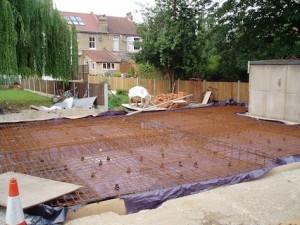
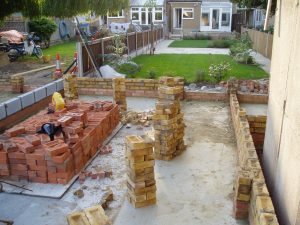 There is an alley to the back of my house so I and my neighbour, who also wanted a garage, clubbed together and applied for planning permission. This was granted after a few months but, because of a nearby willow tree, the buildings inspector insisted upon a massive, reinforced raft foundation. So, we hired a mini digger to excavate, then filled it with two tons of steel bar and caging. Then, one hot summer day, five large cement lorries queued up in the street while we pumped 95 tons of concrete 60 meters down the alleyway to fill the base.
There is an alley to the back of my house so I and my neighbour, who also wanted a garage, clubbed together and applied for planning permission. This was granted after a few months but, because of a nearby willow tree, the buildings inspector insisted upon a massive, reinforced raft foundation. So, we hired a mini digger to excavate, then filled it with two tons of steel bar and caging. Then, one hot summer day, five large cement lorries queued up in the street while we pumped 95 tons of concrete 60 meters down the alleyway to fill the base.
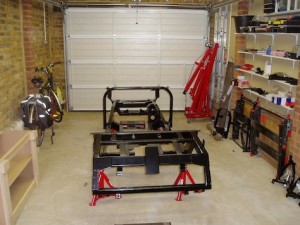
For speed we hired a bricklayer but my neighbour and I did everything else ourselves: carpentry, roof rafters, tiling, windows, doors, electrical wiring and plumbing. I’d never done anything like that before and learned a lot but, twelve years later, the garages are still standing with no cracks or leaks and looking good.
Finally, I could order – in four deliveries – the chassis, engine, body and other parts from Suffolk Sportscars. Building the car was fun; I learned that traditional British engineering does require a bit of brute force sometimes. The electrics were a great puzzle. Suffolk Sportscars had a wiring diagram, but it did not match my loom; for example, a red & white wire in the diagram turned out to be purple in the loom. However, I worked everything out eventually.

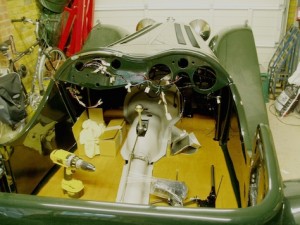
It took me about two years of Sundays but, finally, I trailered the car to Suffolk Sportscars for trimming and final testing; I was finally able to drive it in September 2010. It is great fun and, apart from some initial teething troubles while everything bedded in, I’m glad to say it has been very reliable; I’ve now driven 28,000 miles, including six European tours, without a single incident. I hope to do many more.
Now, whenever someone asks me how long it took to restore my ‘Morgan’, I tell them: “Actually, it’s a replica SS100 Jaguar that I built from new in five years from applying to my council for permission.”
Richard Gibby
